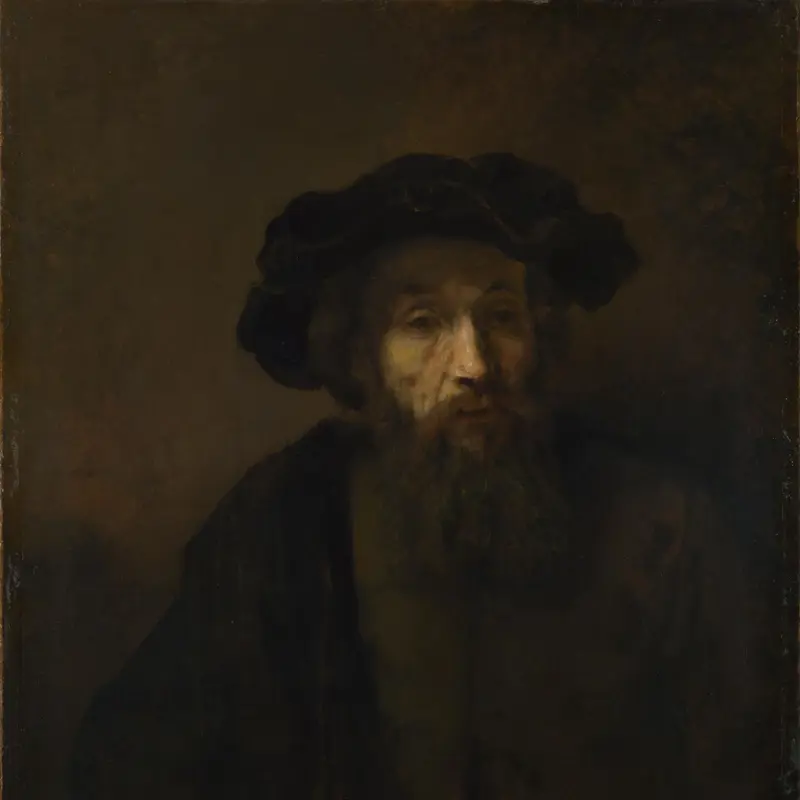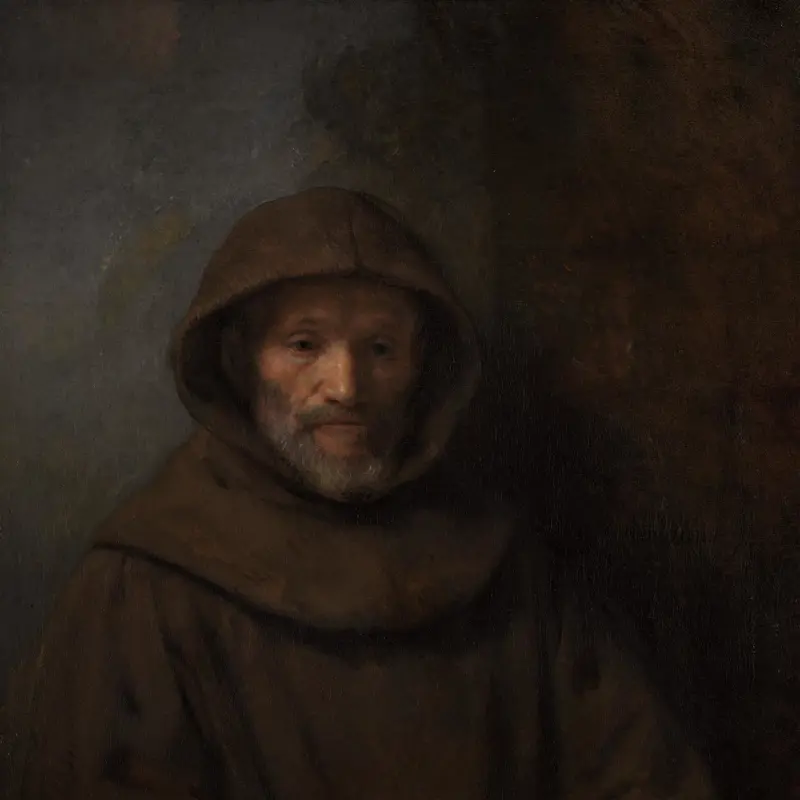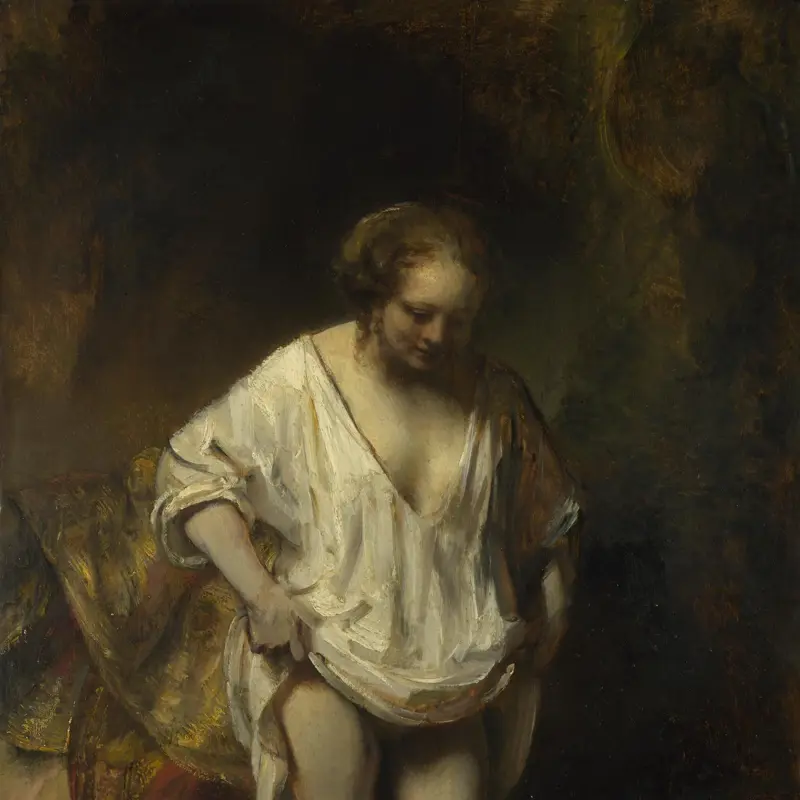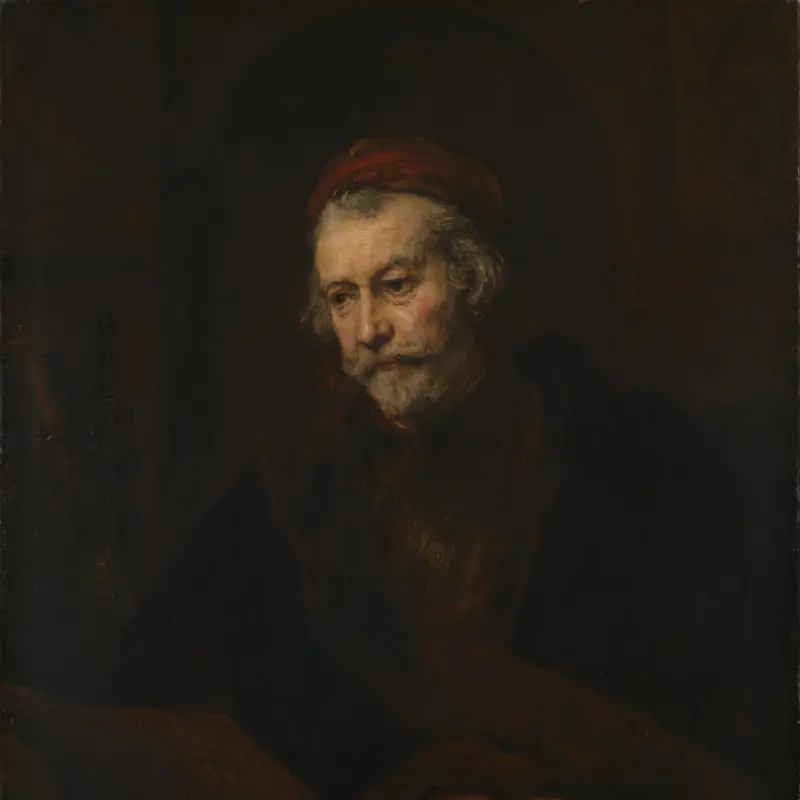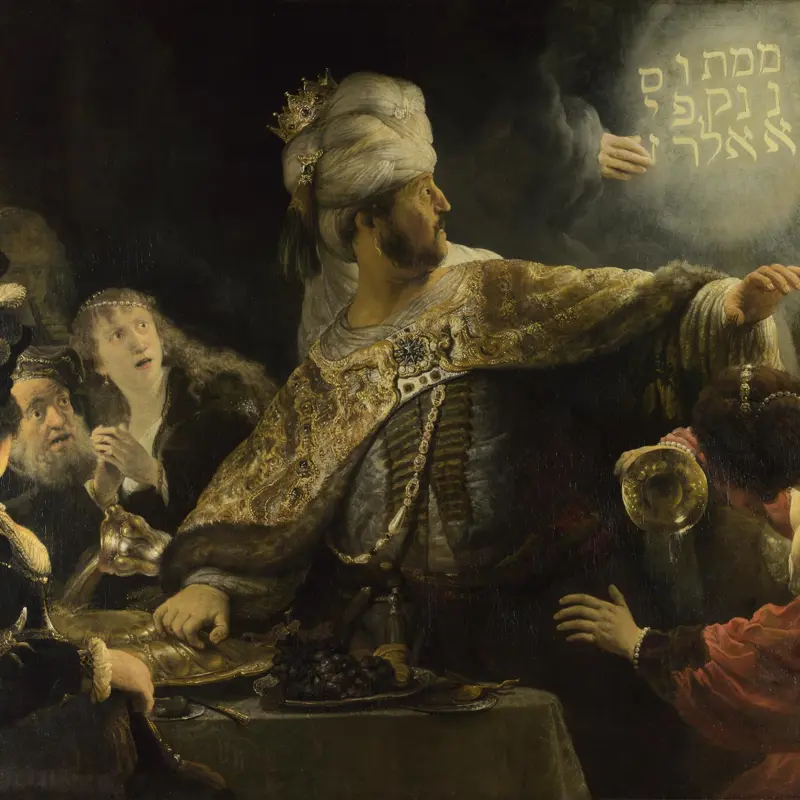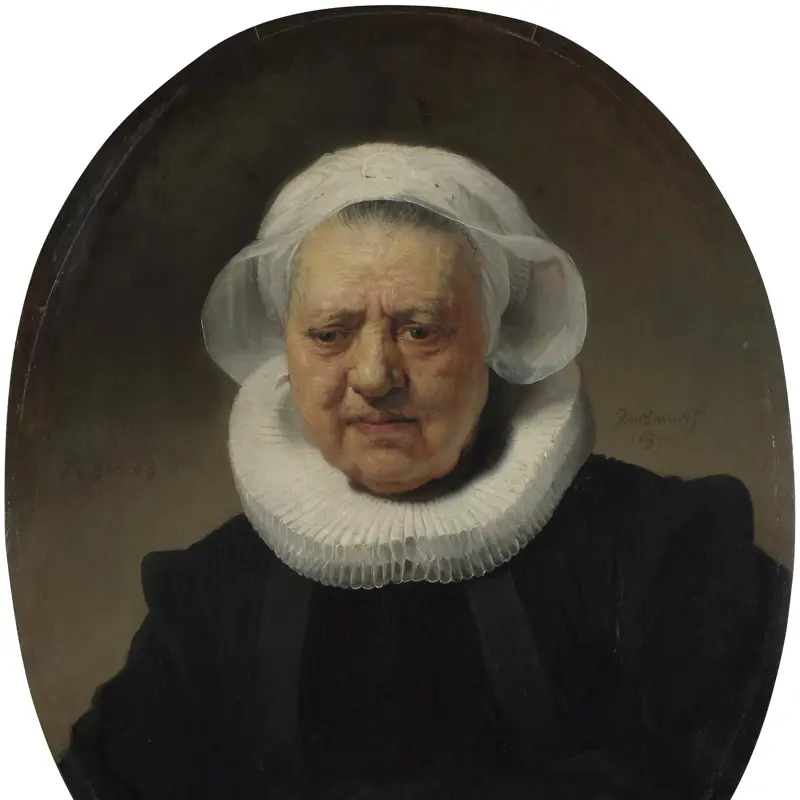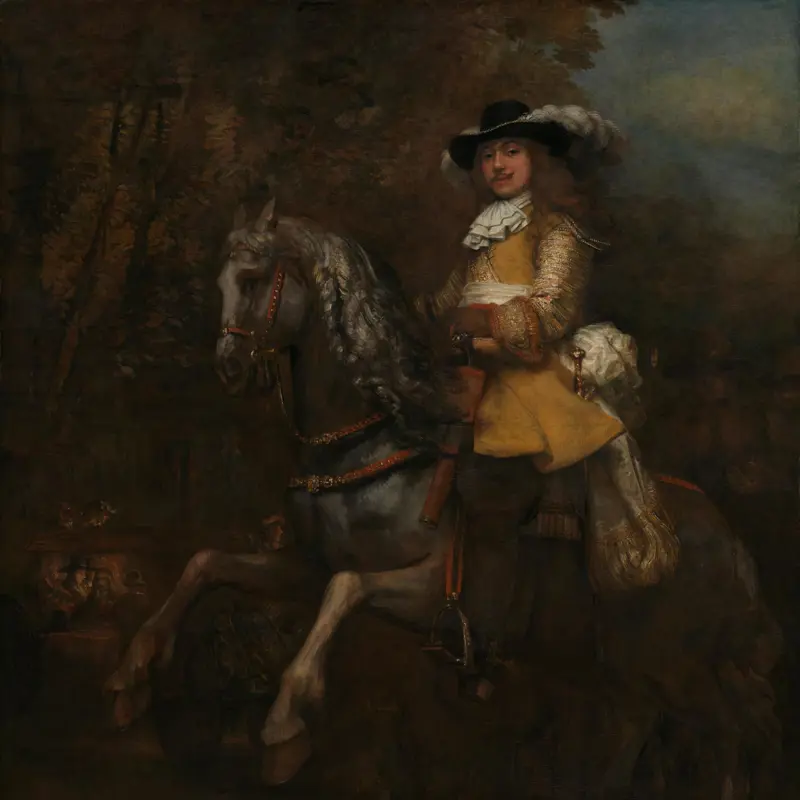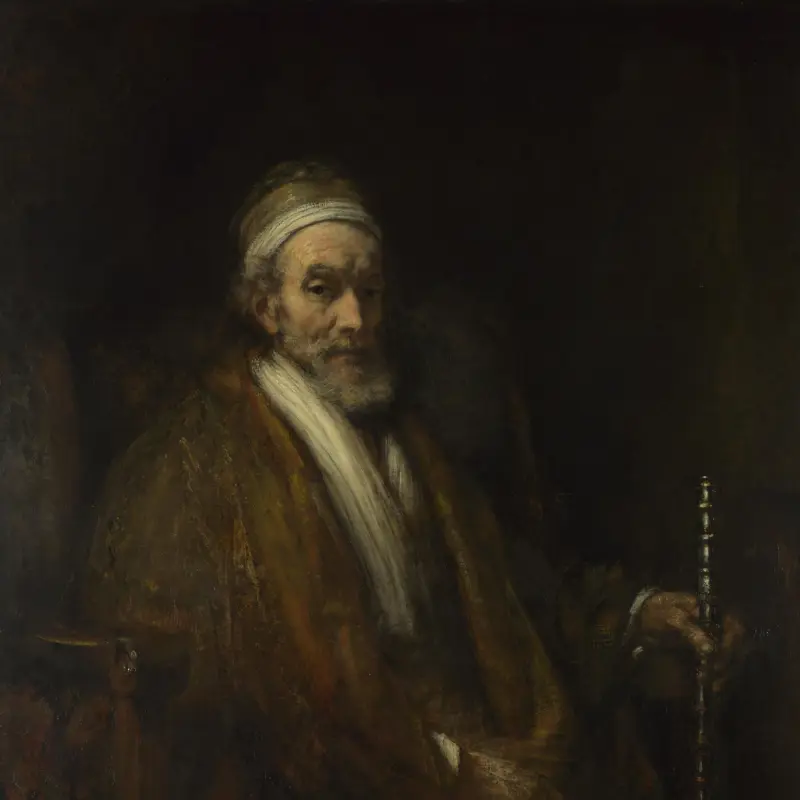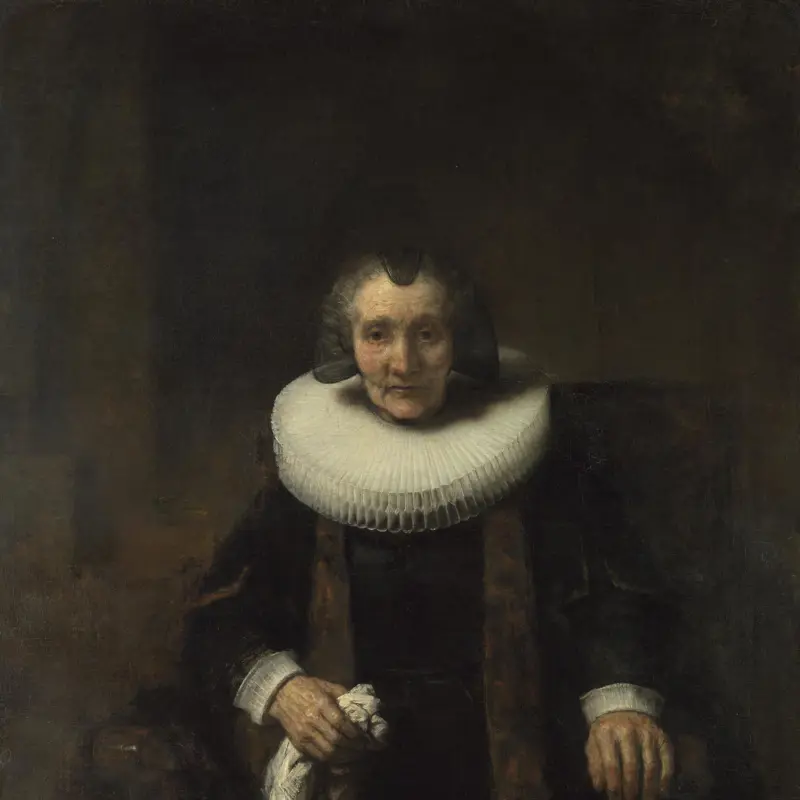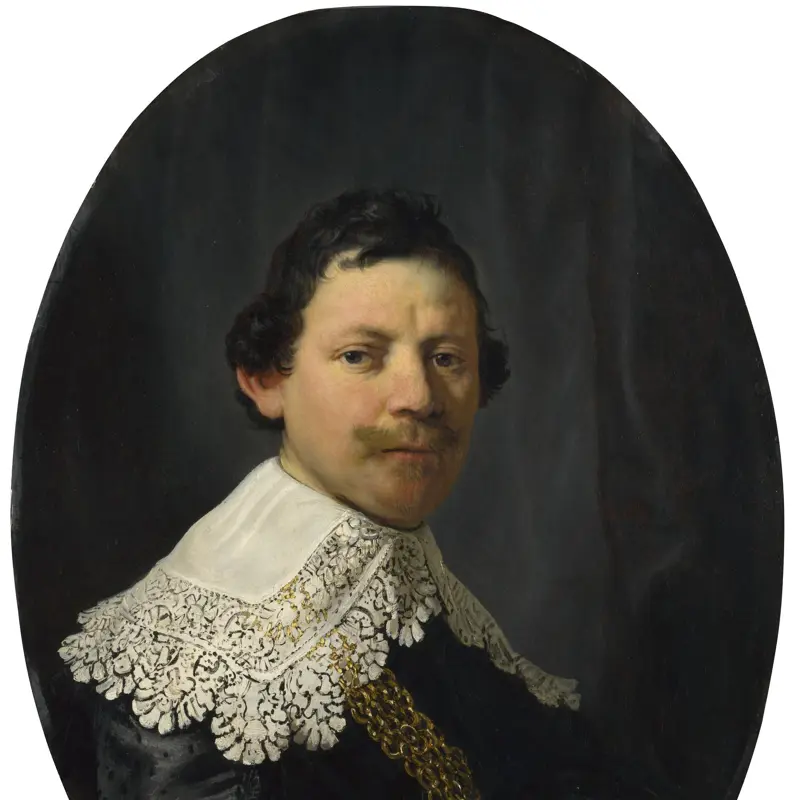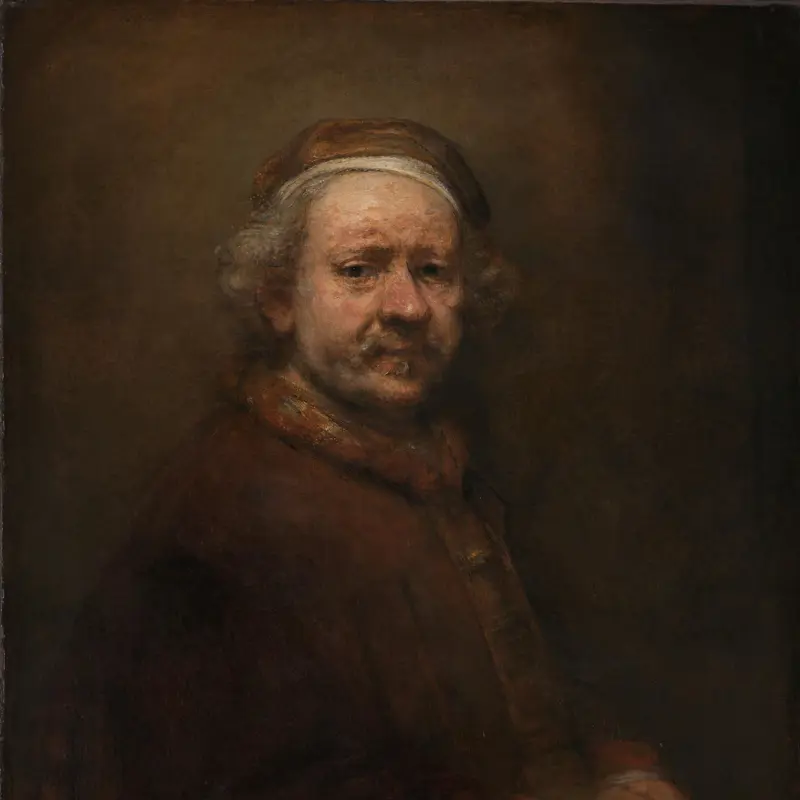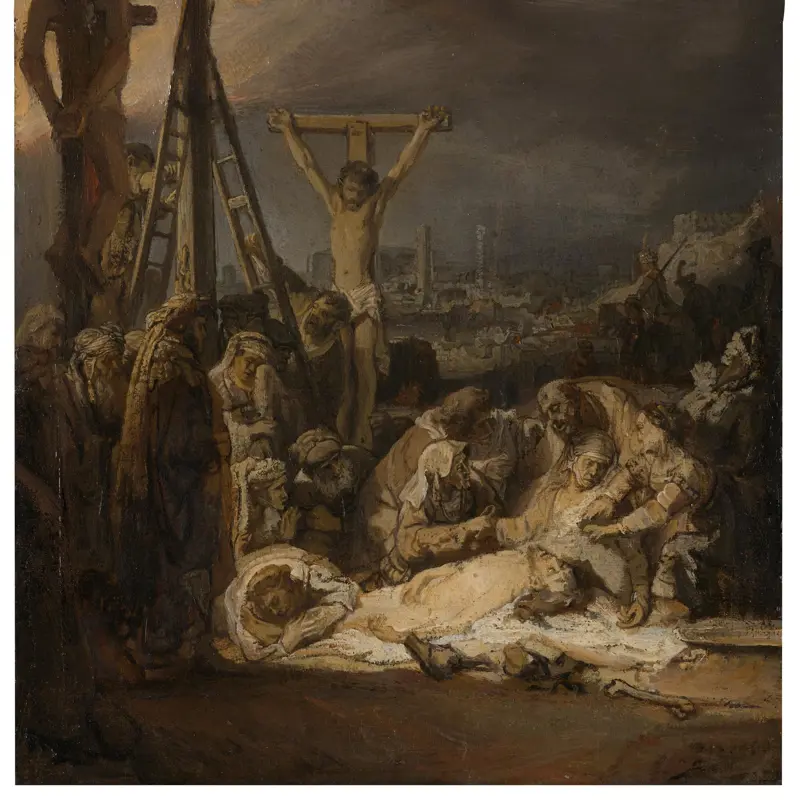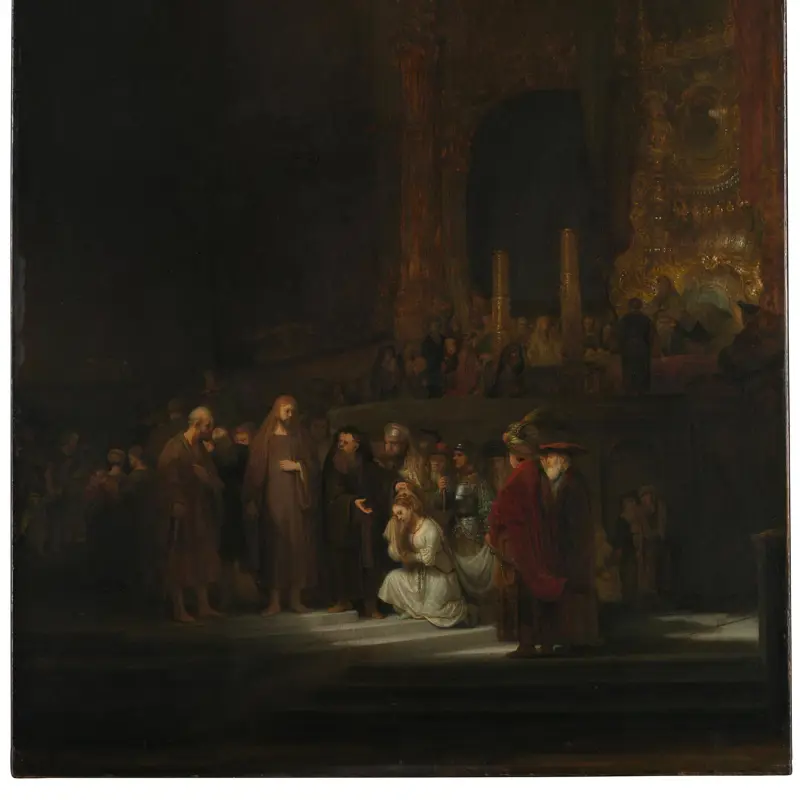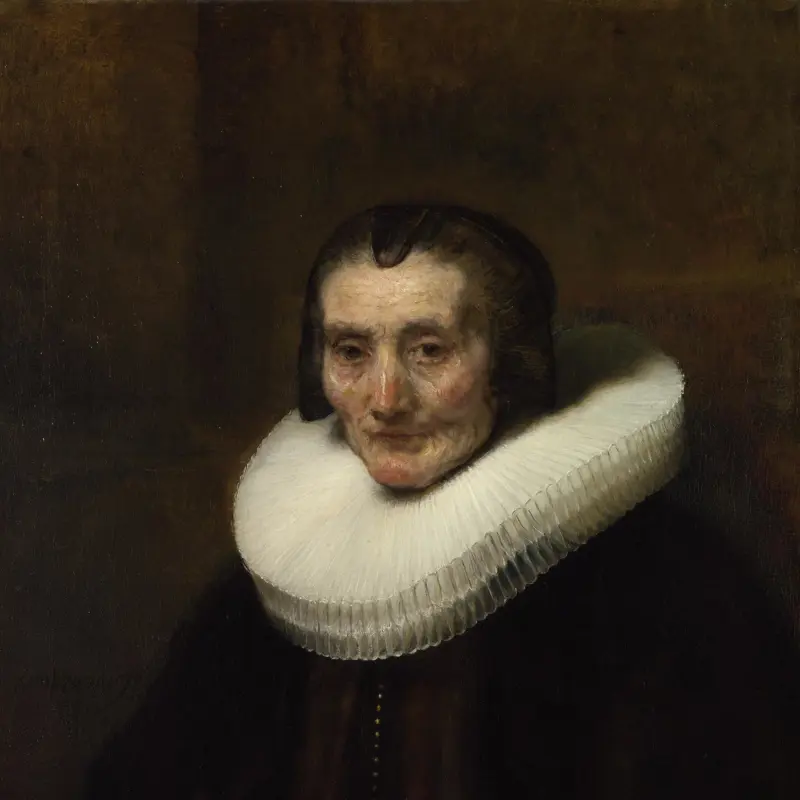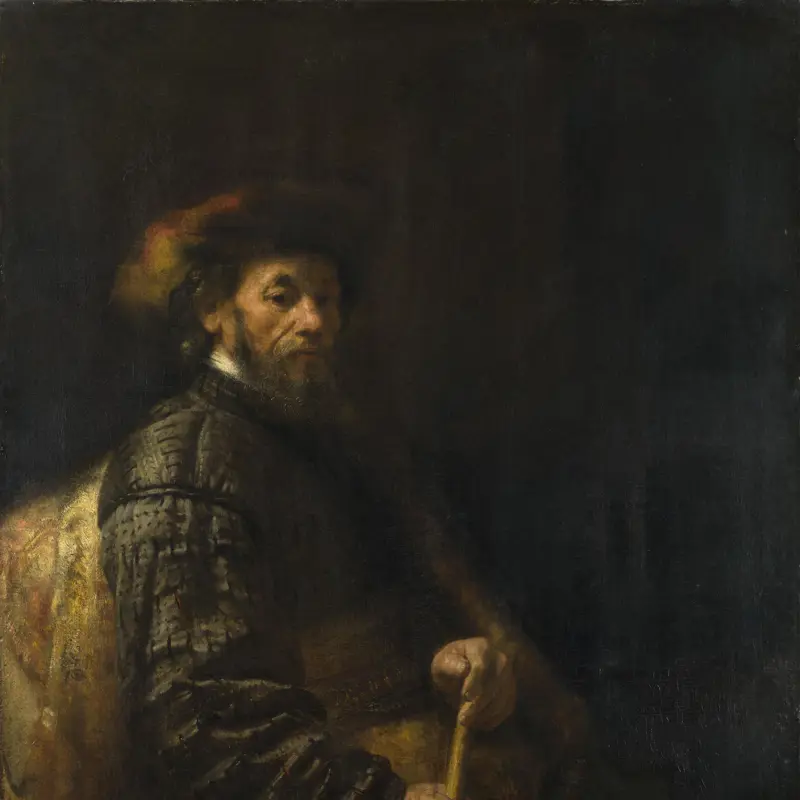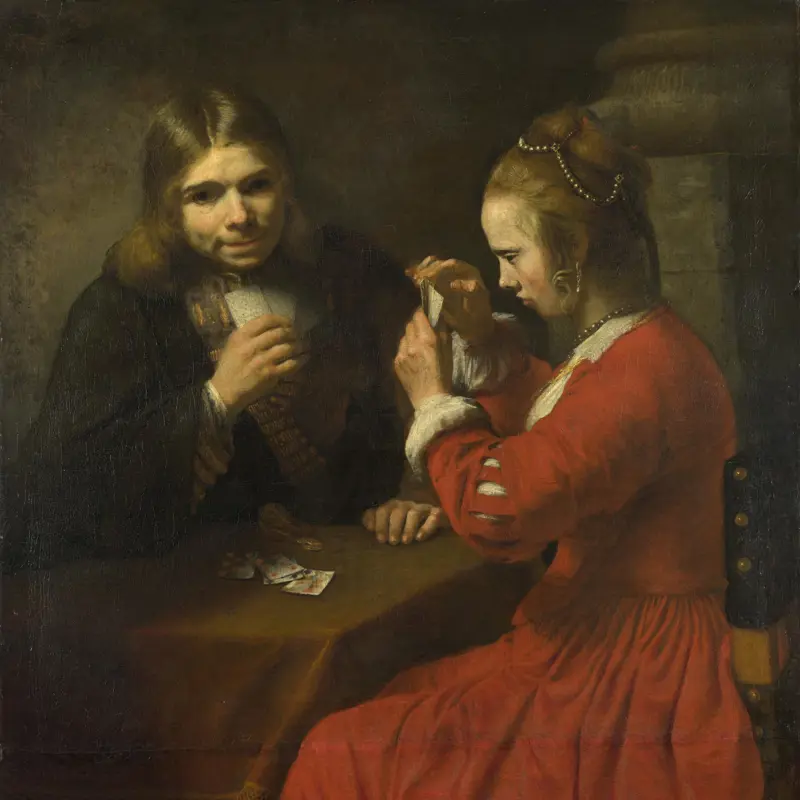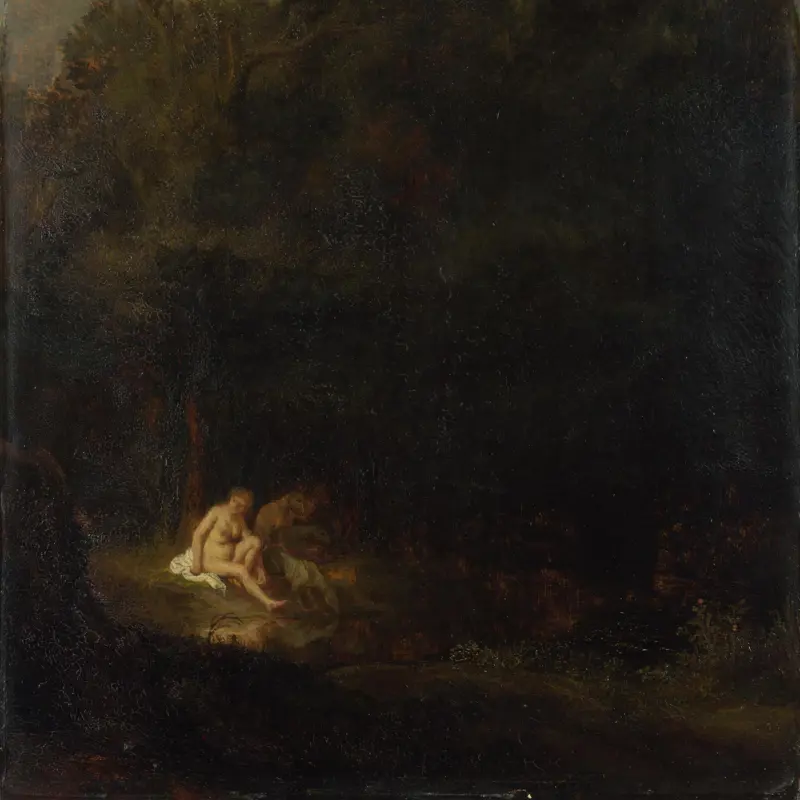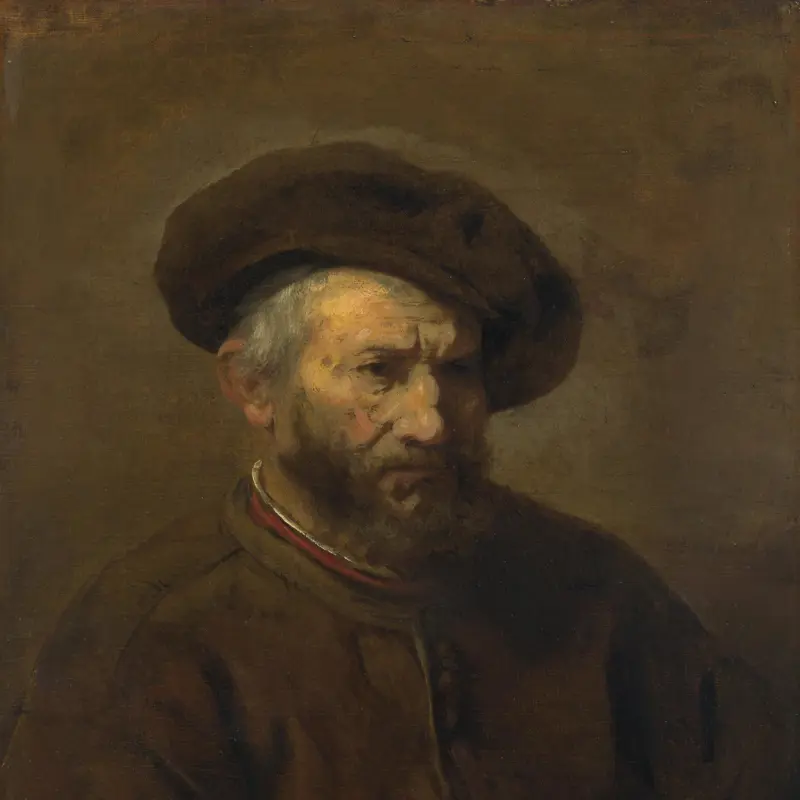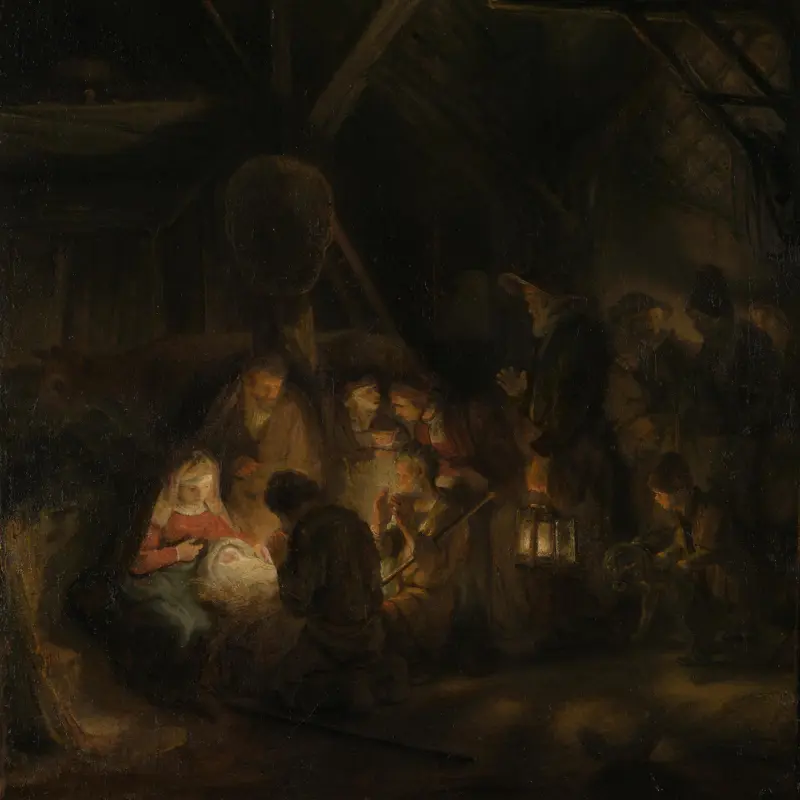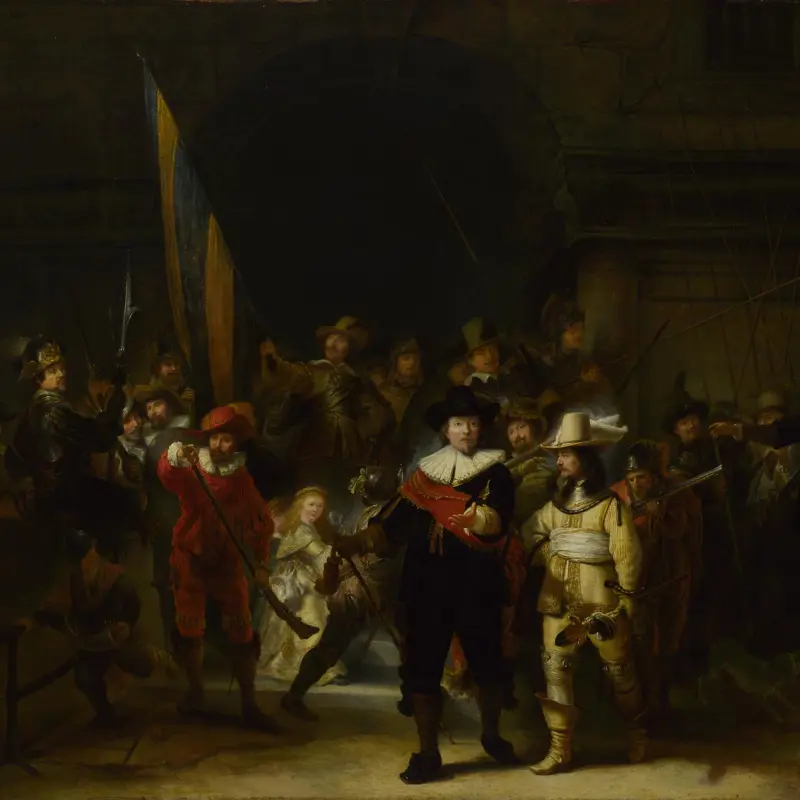Follower of Rembrandt, 'A Man seated reading at a Table in a Lofty Room', about 1628-30
About the work
Overview
This atmospheric painting shows a lonely figure seated in front of a huge volume open on the table before him. Brilliant sunlight floods through the gloom onto the wall of the room. Much of the image’s power lies not just in the dramatic tension between light and dark, but in the way the artist has used thick white paint and grey detailing to capture the refraction and reflection of light by the window glass. In the deep shadows beyond these highlights we can make out shelves of books and two globes mounted on the wall above them. This is a library and so the man at the table must be a scholar.
But while it is highly evocative, this painting has also proved controversial. When bought by the National Gallery in 1917 it was believed to be an important early work by Rembrandt. Recent analysis suggests it may be by an unknown contemporary who was familiar with Rembrandt’s work.
Key facts
Details
- Full title
- A Man seated reading at a Table in a Lofty Room
- Artist
- Follower of Rembrandt
- Artist dates
- 1606 - 1669
- Date made
- about 1628-30
- Medium and support
- oil on wood
- Dimensions
- 55.1 × 46.5 cm
- Acquisition credit
- Bought, 1917
- Inventory number
- NG3214
- Location
- Room 22
- Collection
- Main Collection
- Frame
- 18th-century English Frame
Provenance
Additional information
Text extracted from the ‘Provenance’ section of the catalogue entry in Neil MacLaren, revised and expanded by Christopher Brown, ‘National Gallery Catalogues: The Dutch School: 1600–1900’, London 1991; for further information, see the full catalogue entry.
Exhibition history
-
2009ShadowsMuseo Nacional Thyssen-Bornemisza10 February 2009 - 17 May 2009
-
2019Young RembrandtStedelijk Museum De Lakenhal1 November 2019 - 9 February 2020The Ashmolean Museum of Art and Archaeology27 February 2020 - 1 November 2020
Bibliography
-
1824W. Buchanan, Memoirs of Painting: With a Chronological History of the Importation of Pictures by the Great Masters into England Since the French Revolution, London 1824
-
1917C.J. Holmes, 'An Undescribed Panel by Rembrandt', The Burlington Magazine, XXXI/176, 1917, pp. 171-2
-
1923J.C. Van Dyke, Rembrandt and His School: A Critical Study of the Master and His Pupils with a New Assignment of Their Pictures, New York 1923
-
1960Maclaren, Neil, National Gallery Catalogues: The Dutch School, 2 vols, London 1960
-
1964H. van der Waal, 'Rembrandt's Faust Etching: A Socinian Document and the Iconography of the Inspired Scholar', Oud Holland, LXXIX/1-4, 1964, pp. 6-45
-
1969E. Haverkamp-Begemann and J.R. Judson, Rembrandt after Three Hundred Years: An Exhibition of Rembrandt and his Followers (exh. cat. Art Institute of Chicago, 25 October - 7 December 1969; Minneapolis Institute of Arts, 22 December 1969 - 1 February 1970; Detroit Institute of Arts, 24 February - 5 April 1970), Chicago 1969
-
1974H. van der Waal, 'Rembrandt's Faust Etching: A Socinian Document and the Iconography of the Inspired Scholar', in H. van der Waal, Steps towards Rembrandt. Collected Articles 1937-1972, Amsterdam 1974
-
1985L. Freedman, 'Rembrandt's Portrait of Jan Six', Artibus et historiae, VI/12, 1985, pp. 89-105
-
1986National Gallery, 'Pictures Cleaned and Restored in the Conservation Department of the National Gallery, January 1985 - December 1985', National Gallery Technical Bulletin, X, 1986
-
1991Maclaren, Neil, revised by Christopher Brown, National Gallery Catalogues: The Dutch School, 1600-1900, 2nd edn (revised and expanded), 2 vols, London 1991
-
1995E.H. Gombrich, Shadows: The Depiction of Cast Shadows in Western Art (exh. cat. The National Gallery, 26 April - 18 June 1995), London 1995
-
2001
C. Baker and T. Henry, The National Gallery: Complete Illustrated Catalogue, London 2001
-
2001E. van de Wetering and B. Schnackenburg, The Mystery of the Young Rembrandt, (exh. cat. Gemäldegalerie Alte Meister, 3 November 2001 - 27 Jnaury 2002), Wolfrathausen 2001
-
2006G. Stewart, The Look of Reading: Book, Painting, Text, Chicago 2006
-
2006D. Bomford et al., Rembrandt, London 2006
-
2009V.I. Stoichita (ed.), La sombra (exh. cat., Museo Thyssen-Bornemisza and Casa de las Alhajas, Fundación Caja, Madrid), Madrid 2009
About this record
If you know more about this work or have spotted an error, please contact us. Please note that exhibition histories are listed from 2009 onwards. Bibliographies may not be complete; more comprehensive information is available in the National Gallery Library.

